Usability is the most important criterion when choosing a BIaaS solution
Market study: BI as a Service
The present study on the topic BIaaS was developed by conesprit GmbH in collaboration with Heilbronn University of Applied Sciences as part of a study project based on an empirical investigation. The market survey was carried out among 350 participants in November and December 2016. The participants were either won over mailings (58%) like the Controllers’ e-News of the International Controllers’ club, or over various Xing- groups as well as the Controller-Portal (42%). The selected Xing-groups are primarily aimed at controllers, some are aimed at people interested in the topic BI.
The empirical study deals with the status quo of the use of Enterprise Resource Planning (ERP) and Business Intelligence (BI) applications as well as the benefits and needs of BI applications. In addition to this, purchasing reasons for BI as a Service (BIaaS) as well as advantages of and reservations against BIaaS are illuminated.
The detailed study is available for download. A summary of the results is given below.
Background: Business Intelligence in SMEs
For many years, BI had a reputation for being an application for large multinational corporations exclusively. Globalization, competitive pressure, changing trends, changing regulatory requirements and economic crises increase the demands on companies nowadays. The pace of change is faster. Only companies that recognize opportunities and risks quickly can secure competitive advantages. Due to the high amount of data, a manual path for a sensible information acquisition is hardly possible anymore. SMEs also have to implement a BI application on sight, because wrong decisions due to insufficient information can hit SMEs harder than diversified corporations.
Due to limited resources, many SMEs are afraid to introduce BI. Instead of an individually adapted BI application, the BIaaS concept is an alternative that must be evaluated. The implementation of BIaaS takes less time. Companies can access a variety of standard reports and functions always and from anywhere. All employees always access the same current application. Operation, support and further development are outsourced. This takes considerable work off the IT department. The BI software is remunerated through a rental fee. The costs are transparent and predictable.
Summary of study results
Use of Enterprise Resource Planning (ERP)
Of the 350 study participants, 55% have SAP ERP in operation. The rest is distributed to other providers (Microsoft Dynamics 8%, Oracle 3%, internal solution 4%, no solution 4%, different solutions 26%).
34% of companies with up to 400 employees have SAP ERP in operation. 66% of companies with more than 400 employees use SAP ERP.
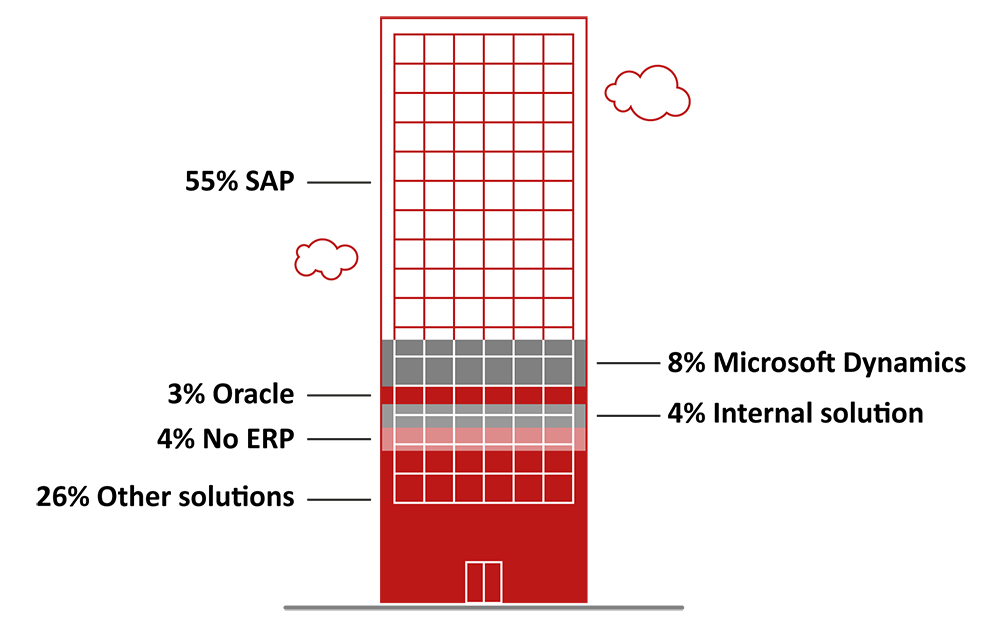
Use of Business Intelligence Software
55% of the study participants who use SAP ERP (n=193) work with an SAP Business Warehouse (SAP BW), the BI solution of SAP. 45% of these participants use BI software of a different provider or no BI software at all.
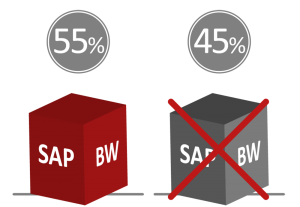
55% of SAP users use SAP BW
The use of an SAP BW increases with the number of employees (n=127). 36% of companies with up to 400 employees use SAP BW. 55% of companies with 400 to 10,000 employees work with SAP ERP. And 82% of companies with more than 10,000 employees use an SAP BW.
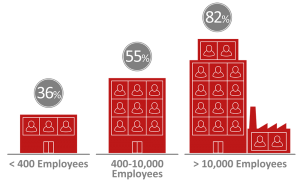
Use of SAP BW increases with number of employees
Out of 157 respondents, who do not use SAP ERP, 66% use BI software. 34% do not use BI software.
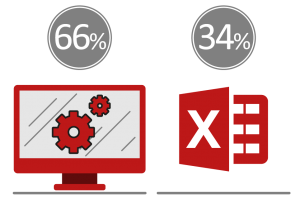
66% of non-SAP users use BI software
Benefits of BI software
In the market survey the participants were asked about the benefits of BI software. For the answer a scaling from 1 (very low) to 6 (very high) was used. The question of benefit was answered by 344 participants with 4.9 out of 6.0 as high. For companies with more than 400 employees the benefit is 5.3, with less than 400 employees it is 4.6. The sales and logistics departments appreciate the value with 5.5 out of 6.0 as very high, followed by IT and personnel (5.3), controlling (5.1), marketing and management (4.5), finance and purchasing (4.3). The participants of the production estimate the benefit of BI software only at 3.3.

Benefits of BI software very high
Need of BI Software
The question of benefit was answered by 341 participants with 4.7 out of 6.0 as high. For companies with more than 400 employees the demand is 5.1, with less than 400 employees the demand is 4.5 out of 6.0.
The departments IT, human resources, logistics, controlling and sales regard the demand for BI software on average as high. Finance, purchasing and management consider the demand as rather high (4.1). The production department sees the need for BI software as rather low (3.3).

Need for BI software very high
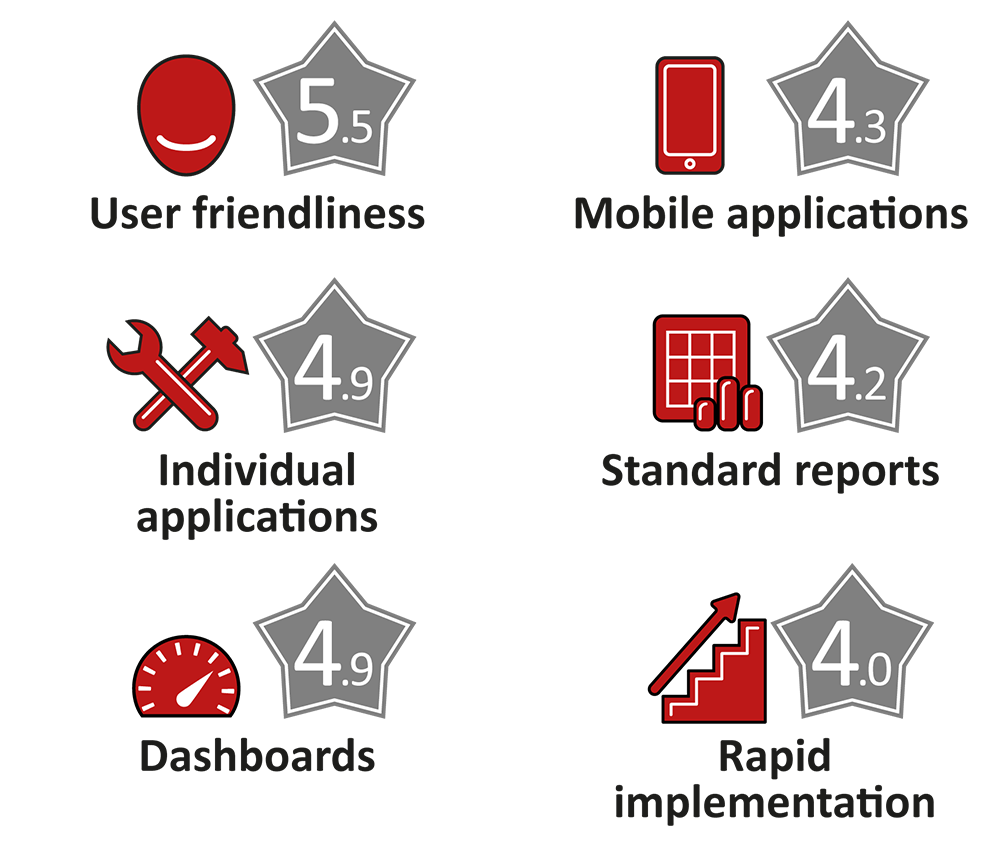
Purchasing reasons for Business Intelligence as a Service (BIaaS)
Respondents were asked to assess the importance of different criteria in the selection of BIaaS applications (scale 1-6; ‘completely unimportant’ to ‘very important’). The ratings range from 2.9 (rather unimportant) to 5.5 (important to very important).
From the perspective of around 295 respondents, user friendliness is by far the most important factor for a BIaaS solution, followed by individual further development (4.9) and the possibility to display data as dashboards (4.9). The mobile application of the software (4.3) is more important to the interviewees than the immediate use of standard reports (4.2) and the rapid implementation (4.0). Outsourcing of further development (3.3), outsourcing of support (3.2) and outsourcing of operations (2.9) are rather insignificant for the interviewees. A price model on a monthly basis also plays a rather insignificant role (2.9).
Advantages of BIaaS
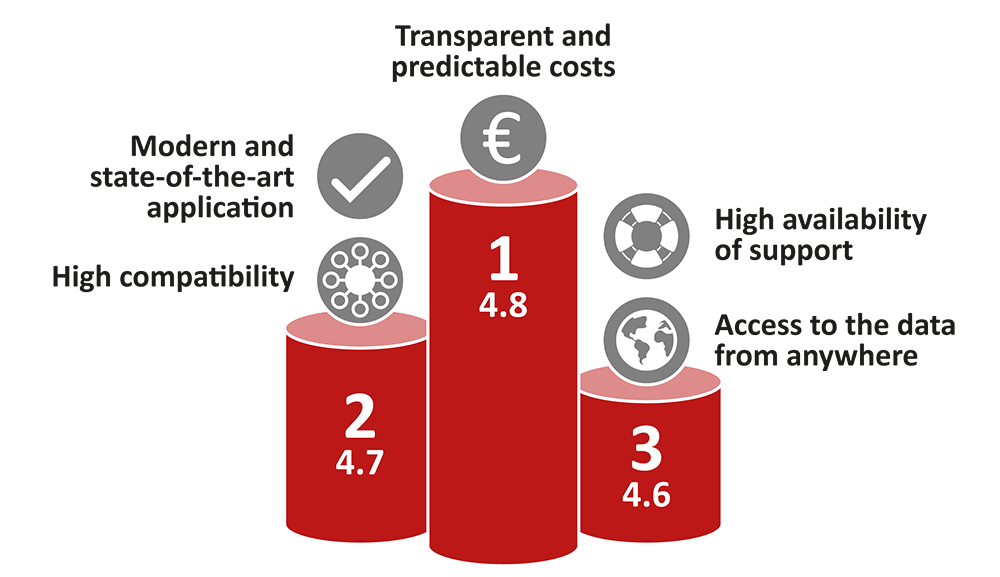
Interviewees were asked to assess a number of advantages of BIaaS (scale 1-6; ‘very low’ to ‘very high’). The given evaluations range from 4.0 (rather high) to 4.8 (high). The evaluation range is therefore rather small.
For some 250 respondents, the most important advantage of BIaaS is transparent and predictable costs (4.8). The advantages of a modern and state-of-the-art application (4.7) as well as high compatibility (4.7) are second, followed by access to the data from anywhere (4.6) as well as high availability of the support (4.6). A rapid implementation (4.4) is in the middle of the assessment. Cost savings and mobile access are rated 4.2. The lower workload of the IT department, standardization and possibility of cancellation (terminability) are rated as rather high at 4.1 and 4.0, respectively, but they represent the least significant benefits.
Reservations against BIaaS
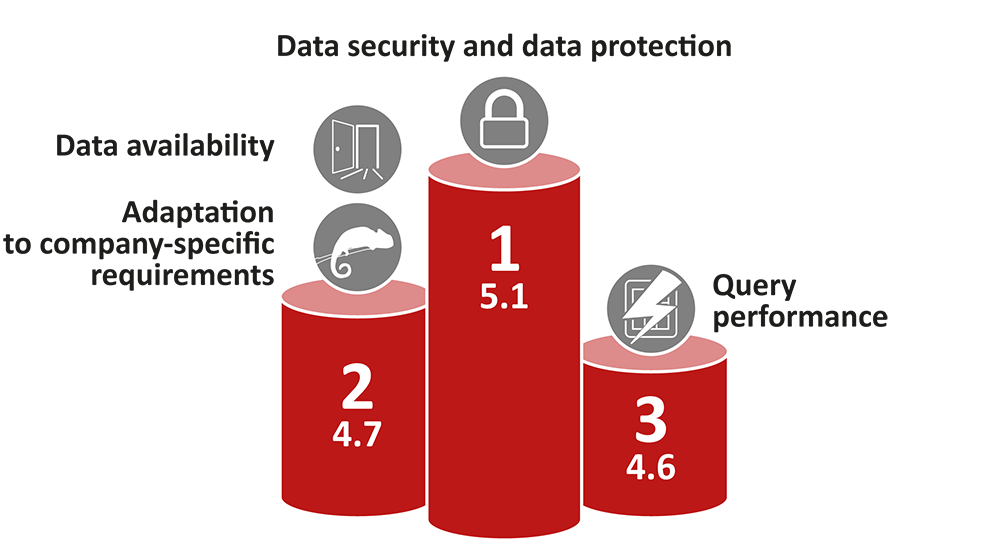
Respondents were asked to assess a number of reservations against BIaaS (scale 1-6: ‘very low’ to ‘very high’). The evaluations range from 3.3 (rather low) to 5.1 (high).
Data protection of personal data (5.1) and data security of company-related data (5.1) are perceived as the most important reservations among the approximately 280 respondents. Data availability (4.7), the adaptation of the BI solution to company-specific requirements (4.7) as well as the query performance (4.6) is classified as high by the interviewees. Dependency on the software provider of the BIaaS solution is rated as rather high (4.1). The fear that BIaaS suffers from low flexibility is rather low at 3.3.
Data storage
Data storage on premise is rated as more important with 4.4 out of 6.0 by the 293 respondents.
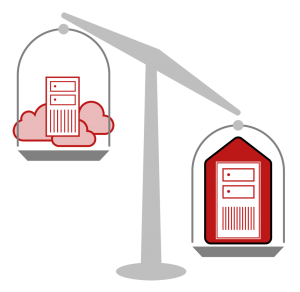
Data storage (still) preferred on premise
Evaluation of BIaaS by company size
Looking at the assessment by small and medium-sized companies, it is striking that they attach greater importance to contractual aspects with the BIaaS provider. These include the speed of implementation, the outsourcing of further development and support, transparent and predictable costs as well as the termination of the contract. Likewise, mobile access and access from anywhere play a greater role for them than for large corporations.
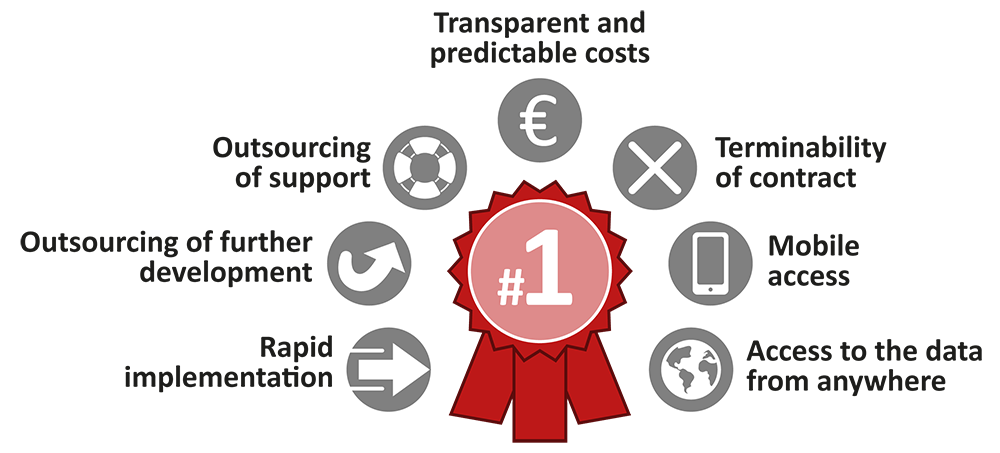
For small and medium-sized enterprises,
contractual aspects are particularly attractive
Evaluation of BIaaS by Business departments
Salespeople find BIaaS solutions more attractive than their counterparts from other departments, but they are also more critical. Management is equally attracted to BIaaS, but shares the assessment of the reservations to a lesser extent than the average. Employees from IT see the benefits of BIaaS as less attractive.

Sales and management find BIaaS especially attractive
Conclusion
Usability, described here by user friendliness, up-to-date and modern tools (e.g. dashboards), as well as fast, universally applicable and mobile data availability are very important in a decision for BIaaS. Transparent and predictable costs are considered to be significant benefits of BIaaS. Cost savings and billing period play a subordinate role. It is very important for the surveyed companies that the BI application can be adapted to suit individual company-specific requirements. The standardization of the BIaaS software as well as its rapid implementation is appreciated. Whether the support, the operation or the further development of the BI application are performed in the company itself or via the BIaaS service provider und thus relieves the IT department from a high workload is less important.
It is important that the BI application works smoothly and, in the event of a problem, the support solves it as fast as possible. Data storage is very sensitive to companies. Companies prefer to store their data on premise due to data protection and data security. The fear that a company is dependent on a BIaaS provider through a BIaaS application and that the flexibility is affected by such a concept are among the least valued reservations among the participating companies.
